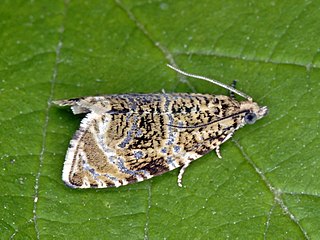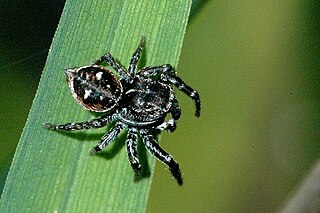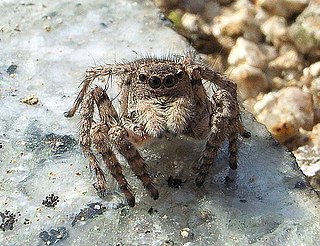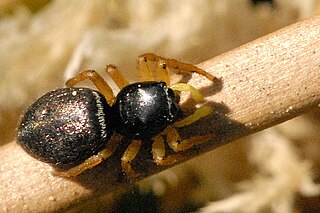
The Palearctic or Palaearctic is one of the eight biogeographic realms of the Earth. It was first used in the 19th century, and is still in use as the basis for zoogeographic classification. The Palearctic is the largest of the eight realms. It stretches across all of Eurasia north of the foothills of the Himalayas, and North Africa.

The squacco heron is a small heron, 44–47 cm (17–19 in) long, of which the body is 20–23 cm (7.9–9.1 in), with 80–92 cm (31–36 in) wingspan. It is of Old World origins, breeding in southern Europe and the Greater Middle East.
Bianor is a genus of boreal jumping spiders that can grow to 3 and 4 mm. The robust shiny body and northerly distribution are distinctive. Males can be easily recognized by his swollen forelegs and females have orange legs. It was first described by George and Elizabeth Peckham in 1886, who names it after the mythical son of Hercules.
Microbianor is a genus of African jumping spiders that was first described by D. V. Logunov in 2000. The name is derived from the Ancient Greek μικρός (micro), meaning "small", and the genus Bianor.

Sibianor is a genus of jumping spiders that was first described by D. V. Logunov in 2001. They are closely related to Bianor.

Papilio bianor, the Common peacock or Chinese peacock black swallowtail emerald or Chinese peacock is a species of butterfly in the family Papilionidae, the swallowtails. It is native to Asia. It is the state butterfly of the Indian state of Uttarakhand.

Syricoris lacunana, the dark strawberry tortrix, is a small moth species of the family Tortricidae. It is found in the Palearctic realm.

Ptinus is a genus of beetles distributed throughout much of the world, including Africa, the Australian region, the Palearctic, the Near East, the Nearctic, and the Neotropical realm. It is a member of the subfamily Ptininae, the spider beetles.
Attulus caricis is a species of spider in the family Salticidae. It has a Palearctic distribution, including Britain. Until 2017, it was placed in the genus Sitticus.

Attulus floricola is a species of jumping spider with a Palearctic distribution. They are typically 4–4.5 millimetres (0.16–0.18 in) in length. Females are dark reddish brown, with an almost black anterior.

Asianellus festivus is a species of jumping spiders with a palearctic distribution. It can be found in Lithuania, where they are considered to be a new species.

Mangora acalypha is a species of spider in the family Araneidae, found throughout the Palearctic realm.

Aphantaulax trifasciata is a species of ground spider in the genus Aphantaulax, family Gnaphosidae.
Bianor angulosus, is a species of spider of the genus Bianor. It is found in Sri Lanka, India to China, Vietnam, and Indonesia.

Heliophanus flavipes is a jumping spider species in the genus Heliophanus. It was first described by Carl Wilhelm Hahn in 1832 and is found in the Palearctic realm.

Heliophanus aeneus is a jumping spider species in the genus Heliophanus. It was first described by Carl Wilhelm Hahn in 1832 and is found in the Palearctic realm.
Sibianor nigriculus is a jumping spider species that lives in Japan, Korea and Russia. The species was originally identified in 1992 and placed in the genus Harmochirus but was moved to Sibianor when that genus was established in 2000. Sibianor nigriculus is closely related to Sibianor aurocinctus and Sibianor turkestanicus, which makes the spiders hard to distinguish, particularly the females of S. aurocinctus and S. nigriculus.

Ebrechtella tricuspidata is a species of crab spiders belonging to the family Thomisidae.

Therion circumflexum is a species of ichneumon wasp in the family Ichneumonidae.
Napoca is a genus of jumping spiders that was first described by Eugène Louis Simon in 1901. As of July 2019 it contains only two species, found only in Israel and Spain: N. constanzeae and N. insignis. It is one of seven genera comprising the Harmochireae clade within the Dendryphantinae subfamily.














